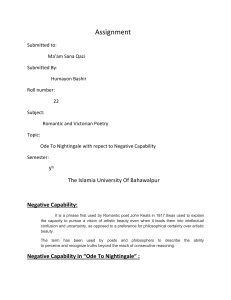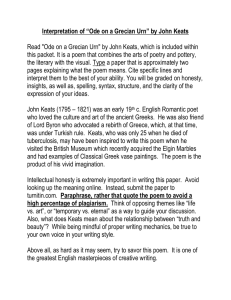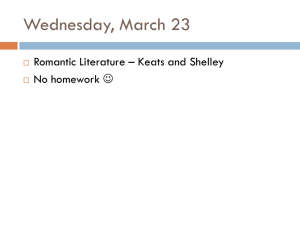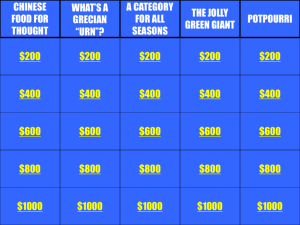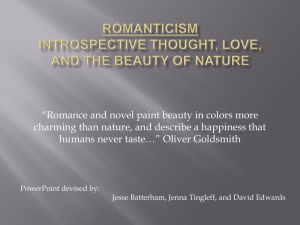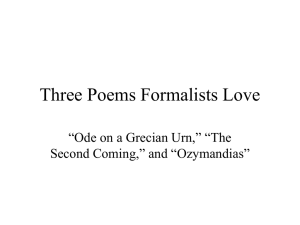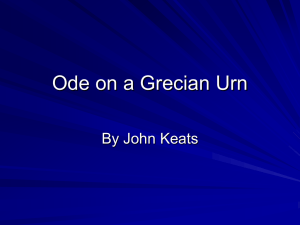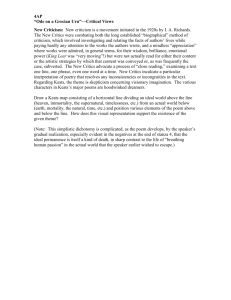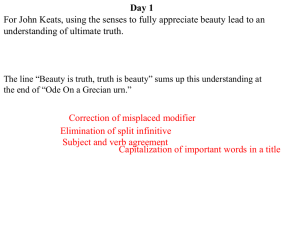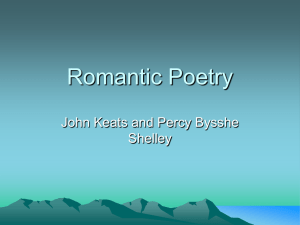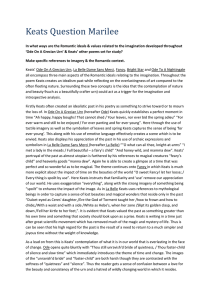Poets of the Romantic Age
advertisement
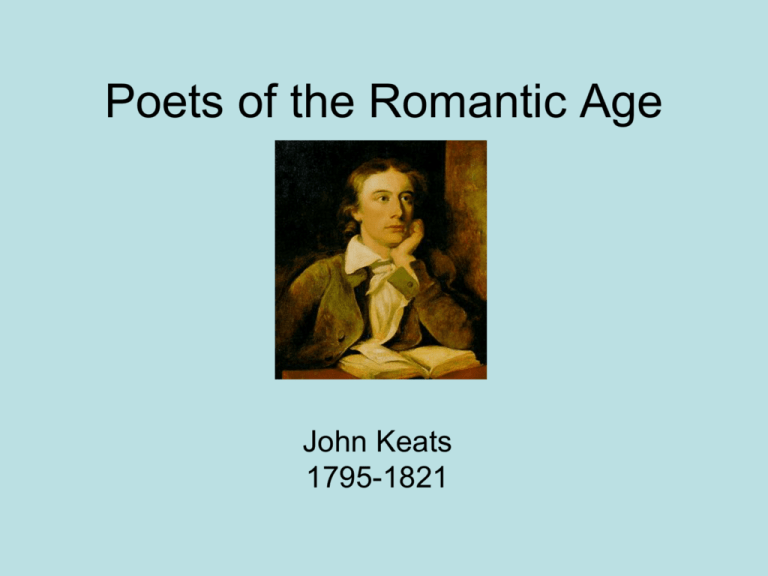
Poets of the Romantic Age John Keats 1795-1821 Biographical Information • Keats was born in London on October 31st 1745. • He became a “freedom writer” of sorts and wrote in hopes of changing the world. • Keats used a number of Greek themes in his poetry. • He did not believe in using poetry for political statements. • In 1818, Endymion was published and received harsh critique. • After he died of tuberculosis, Keats’ friends did as much damage to him as his enemies. • He found beauty to be the highest value our world could offer. • For Keats, striving for what can never be attained was perhaps the true poetic task. • He was profoundly sensitive to the deep contradictions of life. • His brother died the same year he met the love of his life which inspired his poetry. Ode to a Nightingale Summary The speaker begins the poem expressing how disoriented he feels when listening to a nightingale sing. He wishes to drink the richest wine available and fade away into the forest with the nightingale. He describes how he wants to wander away from worries and concerns of life, age, and time. The poet begins to explain that the nightingale is immortal because many different generations of people have heard the song of the bird. The poet is brought back to reality when the bird flies away, he feels abandoned and disappointed that his imagination can’t create his own reality. He is left confused now knowing the difference between reality and dreams. Ode to a Grecian Urn Summary • The speaker is talking to an urn. • He goes from picture to picture questioning what is going on. • He tells us that everything on the urn is frozen in time and will last forever. • “Beauty is truth, truth beauty” On First Looking summary • Keats says in this poem that he knew Homer was a great poet but was not amazed by it until he read Chapmans translation. When I Have Fears that I May Cease to be summary • Keats reflects in this poem about death and all the things that he has not done and will not be able to do once he dies. It is a very dismal poem. Consensus • We as a group preferred “Ode on a Grecian Urn” Because it made a good point and made us think about art in a way none of us had before. Keats describes the art on the urn in a way that brings it to life. The trees are alive and the people have feelings. It is truly a fine piece of literature. Ode on a Grecian Urn images The author describes the urn as a historian who tells a story of ancient time but can never speak. “Sylvan historian ,who canst thus express” “Heard melodies are sweet, but those unheard are sweeter.” He tells of a young pipe player and how his music is more beautiful than any music he ever head because its beauty will never fade. Ode to a Nightingale images “Tis not through envy of the happy lot.” A depiction of Keats in the mood of the poem. Themes • Human mortality- “Ode to a Nightingale” • The inevitability of death- “Ode to a Grecian Urn” • The contemplation of beauty- “Ode to a Grecian Urn”
